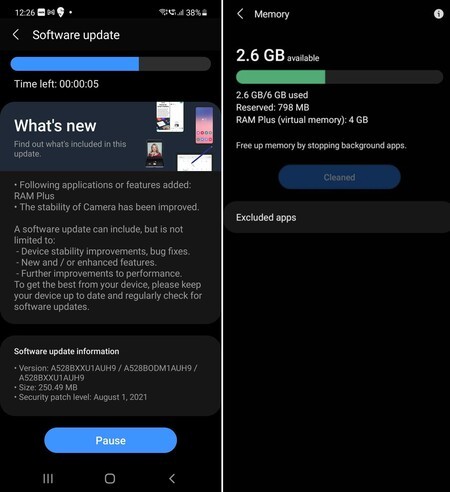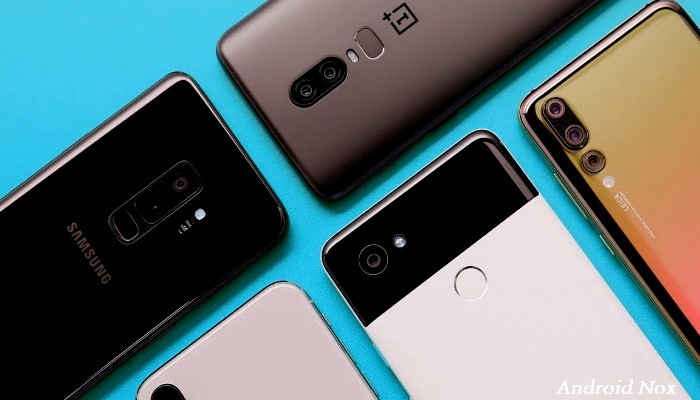Virtual RAM, portion of storage that the system enables to convert to volatile memory, now expanding to Samsung: the Korean brand introduces its feature RAM plus as an update to one of their smartphones, the Samsung Galaxy A52s. Surely it will gradually reach other devices, especially those of the mid-range and accessible.
Getting a phone to sell well requires that the device be of quality, have a recognizable brand and that it has certain elements capable of making it stand out. Lots of cameras, lots of megapixels, very fast charging… and lots of RAM, this is a great selling point. But what if the mobile went on the market with a fair memory? Well, there is a function that can alleviate the lack: virtual RAM. It is reaching various brands, including Samsung.
Samsung RAM Plus, more memory thanks to an update

Galaxy A52s update and virtual RAM operation on the mobile. Image from SamMobile
Virtual RAM software expands the volatile storage of the system, that which is used to streamline processes and reduce startup time when we start applications. With this change, the mobile can keep more processes open, which expands the capabilities of the background and the loading of apps with a certain weight, such as games. In exchange for losing speed.

Brands such as Xiaomi or Realme, OPPO or Vivo already include virtual RAM options, this function will surely end up reaching most devices. It is even possible that Google includes it as a user setting within Android: the system allows it at the developer level.
As they discovered in SamMobile, Samsung has created its own virtual RAM for Galaxy devices. Called RAM Plus, this volatile memory-expanding feature has just arrived on the Samsung Galaxy A52s from India in the form of an update. Thanks to her, It is possible to expand the 6 GB of RAM of the phone with another 4 GB provided by the storage. It is a way to software enhance the capabilities of a device, always with the trade-off of speed.
Virtual RAM allows the system to have greater capacities when running applications in the background or keeping them loaded in memory, but all these processes they will always be much slower than if real RAM were used. In addition, the constant reads and writes that RAM suffers could reduce the life of the storage converted into virtual RAM, this is another of the drawbacks.
Via | SamMobile








